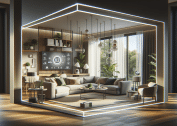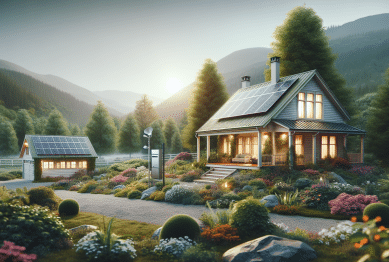Explore practical ways to create lush, relaxing green areas indoors—even in small homes or apartments. This guide reveals key steps, surprising tips, and must-know trends for anyone curious about indoor gardening and maximizing plant health within compact living spaces.
Understanding the Basics of Indoor Gardening
Indoor gardening has become more popular than ever, especially for those living in apartments or houses with limited outdoor space. People are curious about how to bring nature inside, allowing greenery to flourish right where they live. The basics start with knowing your home’s light conditions. Assess every window and determine whether an area gets direct, filtered, or barely any sunlight at all. Many popular indoor plants, such as pothos, snake plants, and zz plants, adapt well to lower light. Understanding this step helps prevent disappointment and keeps your space’s green energy thriving.
Soil quality makes a surprising difference indoors. Unlike outdoor gardening, using regular yard soil can harm root health due to poor drainage and pests. Indoor plant soil blends often contain peat moss, perlite, and coconut coir for nutrition and aeration. Choosing the right mix for your plant’s needs is essential for supporting strong root growth and preventing common problems like root rot. Extra steps like using planters with drainage holes and saucers reduce waterlogged soil and keep roots comfortably moist, not drowning. Every detail here matters more than you might think.
Temperature and humidity also play essential roles in achieving vibrant indoor gardens. Most houseplants thrive in steady temperatures between 60 and 75°F. If your space runs dry, grouping plants together or using small pebble trays with water can subtly increase moisture around the leaves. Even modest adjustments yield healthy, happy foliage. People often overlook these basics while focusing on trendy pots or rare plants, but foundational knowledge guarantees longer-lasting, more luxurious greenery anywhere inside.
Maximizing Light for Indoor Plants
One of the biggest challenges faced by indoor gardeners is light—specifically, how to offer enough for growth without outdoor sun. Most leafy houseplants prefer bright, indirect illumination. This can be achieved by placing plants near east- or west-facing windows, filtered through a sheer curtain. Those with minimal light can still thrive by selecting low-light varieties, such as philodendron or peace lilies. Remember, foliage color may change depending on light intensity, so observe regularly and adjust locations. It’s fascinating to see the dramatic changes when a plant finds its ‘sweet spot’ in your home.
Supplemental lighting is a practical solution, especially in compact spaces or regions with extended cloudy weather. Modern LED grow lights are energy-efficient and designed specifically to mimic sunlight’s spectrum. Compact models easily fit onto shelves or countertops, transforming a gloomy room into a lush oasis. Begin with about 12-14 hours per day for most foliage plants and adjust depending on leaf response. Being aware of new technology allows plant enthusiasts to widen their indoor gardens, even in windowless rooms. Placement, timer control, and routine checks ensure every plant receives optimal light, supporting overall health.
Mirrors and reflective surfaces can bounce available sunlight deeper into rooms, making a big impact without electricity. Smart design hacks include hanging lightweight mirrors opposite windows or using glass-topped side tables. Combined with careful layout, these tricks increase light exposure and reduce shadowy corners. Plus, creative solutions help your indoor garden look stylish and intentional—not cluttered. Lighting is as much about clever use of interiors as it is about technology or plant choice, bringing a unique personal flair to every indoor jungle.
Creative Space-Saving Solutions for Small Homes
Living in smaller spaces means every inch counts, but lush indoor gardening is still within reach. Vertical gardens are a striking solution—think modular wall planters, stacked shelves, or tiered plant hangers. These let you display a variety of plants without sacrificing precious floor area, making even a corner burst with color and life. Hanging pots from ceiling hooks or wall brackets frees up surfaces for books, art, or more greenery. Imagination, more than square footage, determines the size and beauty of your urban oasis.
Multipurpose furniture, like bookshelves or side tables fitted with built-in planters, offer concealed spots for greenery while serving everyday needs. Mobile plant carts can roll from sunlight to shade as needed and double as side tables or kitchen islands. Repurposing old ladders or shower caddies for plant displays gives small-spaces a touch of character while multiplying usable growing spots. Innovative indoor gardening is less about having the perfect environment and more about adapting creatively to what you have.
Compact hydroponics kits—now widely available and surprisingly affordable—enable soil-free plant growth with little mess. These systems fit on countertops or window ledges and frequently come with starter herb seeds or microgreens, making fresh ingredients possible all year round. With rapid advances in at-home hydroponics, more plant lovers are exploring this technology to maximize growth in tiny kitchens and home offices. These approaches show how indoor gardening can be both a science and an art, perfect for anyone wanting to green their space without crowding it.
Choosing Houseplants for Clean Air and Wellness
Selecting houseplants goes beyond appearance—some have proven air-cleaning benefits. NASA research has highlighted the abilities of certain plants to filter chemicals from household air, contributing to fresher, healthier environments (Source: https://www.nasa.gov/mission_pages/station/research/experiments/111.html). Popular options include spider plants, peace lilies, and snake plants. Not only do these thrive in a range of conditions, but they also require modest care, making them accessible for garden novices and busy professionals alike.
Plant care routines—including dusting leaves, checking for pests, and occasional fertilizing—are linked to mindful relaxation and lower stress levels. Indoor plant care is a sensory hobby, fostering calm and focus. Studies suggest that interacting with plants can reduce blood pressure and enhance mood (Source: https://www.ncbi.nlm.nih.gov/pmc/articles/PMC4419447/). Choosing easy-care varieties allows even beginners to cultivate a calming, healthy indoor setting.
Different plants address varying needs. Aloe vera offers skin-soothing gel for minor burns, while herbs like basil or mint provide culinary value and subtle fragrance. Understanding the holistic impact of selected houseplants—improved air quality, mental clarity, and even kitchen utility—transforms indoor gardening from a trend into a lifestyle. The act of nurturing a vibrant, compact garden can make any small space feel not just greener but truly alive.
Soil, Water, and Feeding – Caring for Plants Indoors
Proper watering remains the most common challenge for indoor gardeners, especially in small spaces with fluctuating temperature and humidity. Overwatering is the top cause of root diseases. Let soil dry slightly between waterings for most tropical plants, checking moisture with a finger or digital probe. Cacti and succulents need even less: water only when soil is completely dry. Creating a watering schedule—or simply grouping plants by needs—helps manage time and avoid unhealthy routines.
Feeding plants is simpler than many think. Most houseplants thrive with liquid fertilizer once a month during spring and summer, followed by a slower routine in fall and winter. Organic options and balanced formulas work well for general greenery, but specialty fertilizers are available for orchids or flowering species. Always dilute fertilizer according to instructions, as concentrated mixes can burn roots quickly. Observe leaf color, growth rate, and overall vigor to fine-tune your approach for every plant type.
Avoiding pests indoors is easier with quick inspections and good hygiene. Wipe dusty leaves with a damp cloth, snip away dead foliage, and quarantine new arrivals before mixing with existing collections. If pests like spider mites or fungus gnats do appear, treat promptly using gentle, plant-safe products to avoid harming air quality. These routines help maintain a flourishing, healthy indoor garden that continues to inspire and delight, year after year.
Trendy Indoor Garden Styles and How to Personalize Yours
From minimalist Scandinavian vibes to lush ‘urban jungle’ looks, indoor gardens now reflect personal style as much as traditional décor. Grouping collections of similar plants in monochromatic pots creates visual harmony. Mixing foliage textures—like spiky dracaenas with round-leafed pileas—offers dynamic contrast. For truly unique displays, layer plant heights on bookshelves or construct a living wall as a highlight. Trend-spotting is fun, but personalization is what makes your home’s green corners special.
Decorative touches, such as handcrafted pots, woven baskets, or ornate plant stands, unify the practical with the beautiful. Use objects collected from travels or family mementos as small planters. Integrate plants into every room—kitchens, bathrooms, bedrooms—for a seamless, cohesive look. Many enthusiasts now turn to digital inspiration for layout ideas, blending greenery into home offices or studio backdrops for a refreshing workspace. Each arrangement tells a story, making life indoors unexpectedly uplifting.
Embracing trending options like self-watering pots, indoor water features, or thematic plant shelves keeps your indoor garden fresh and evolving. Don’t be afraid to experiment: swap pots seasonally, propagate cuttings to share with neighbors, or design a functional herb station for culinary adventures. Tailoring an indoor garden is an enjoyable, ongoing process, reflecting your own preferences, lifestyle, and creativity—right down to the smallest succulent or tallest Monstera.
References
1. NASA. (2023). Growing Clean Air: NASA’s Guide To Houseplants. Retrieved from https://www.nasa.gov/mission_pages/station/research/experiments/111.html
2. Lohr, V.I., Pearson-Mims, C.H., & Goodwin, G.K. (2017). Interior Plants – Their Influence on Indoor Environments. Retrieved from https://www.eplantscience.com/index.php/general-plants/interior-plants
3. Lee, M.S. et al. (2015). Interaction with indoor plants may reduce psychological and physiological stress by suppressing autonomic nervous system activity in young adults: a randomized crossover study. Retrieved from https://www.ncbi.nlm.nih.gov/pmc/articles/PMC4419447/
4. Royal Horticultural Society. (2022). How to Grow Houseplants Successfully. Retrieved from https://www.rhs.org.uk/plants/types/houseplants/how-to-grow
5. National Institutes of Health. (2020). Health Benefits of Houseplants. Retrieved from https://newsinhealth.nih.gov/2020/11/houseplants-health
6. University of Minnesota Extension. (2023). Indoor Plants: Caring for Houseplants. Retrieved from https://extension.umn.edu/houseplants/indoor-plants-caring-houseplants









